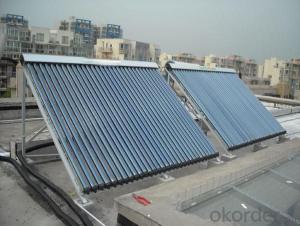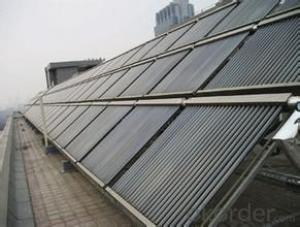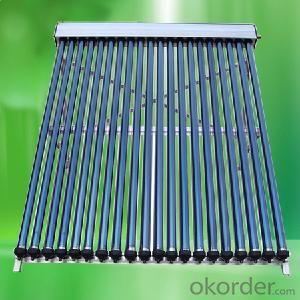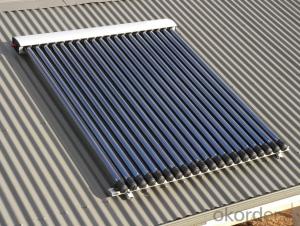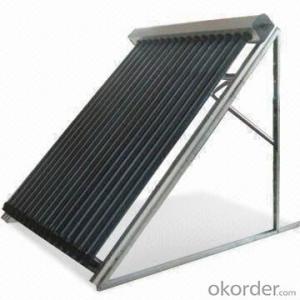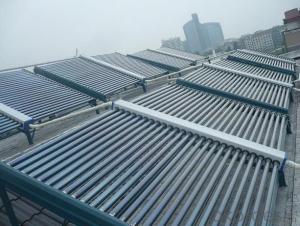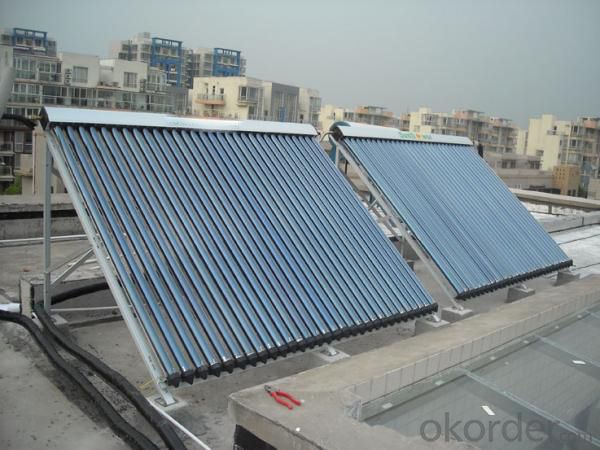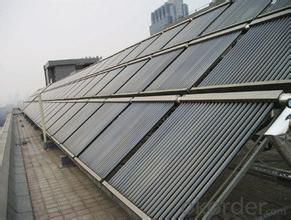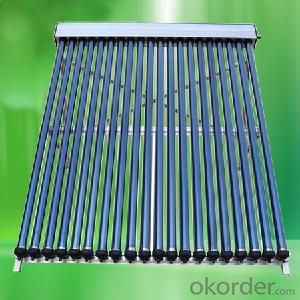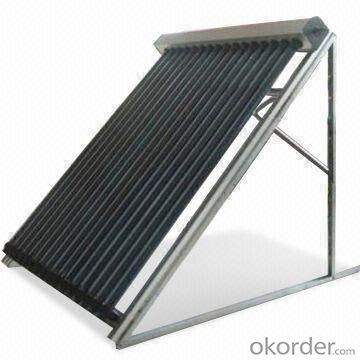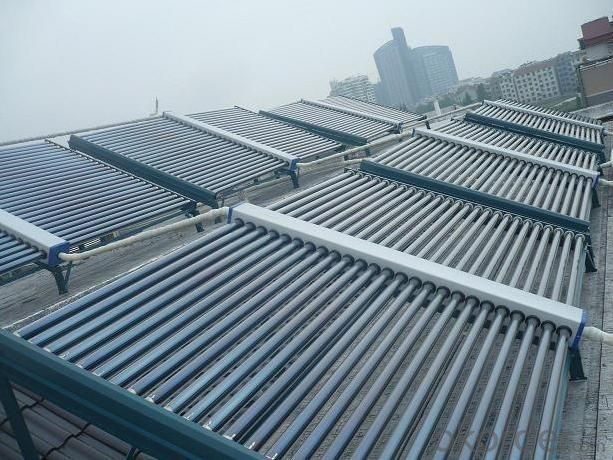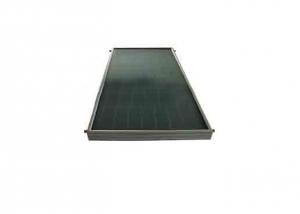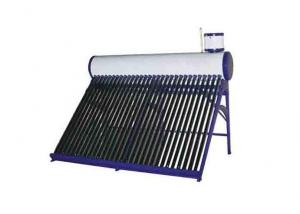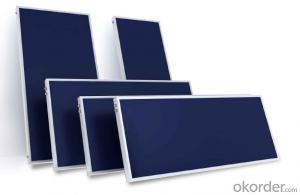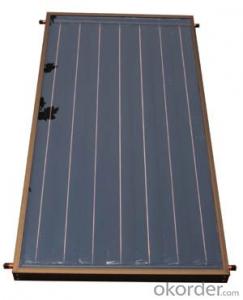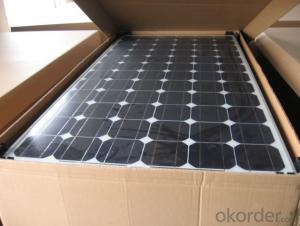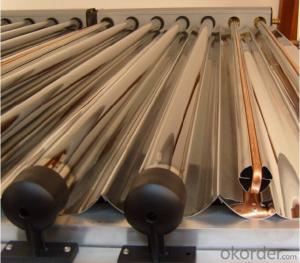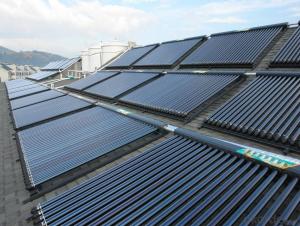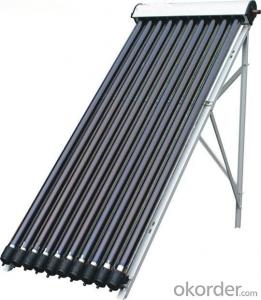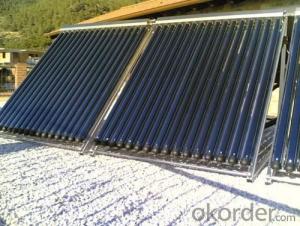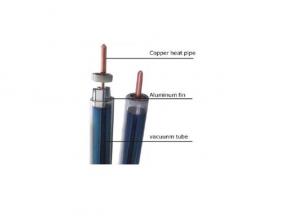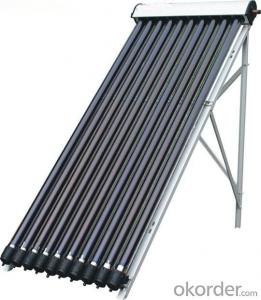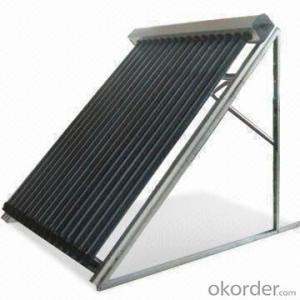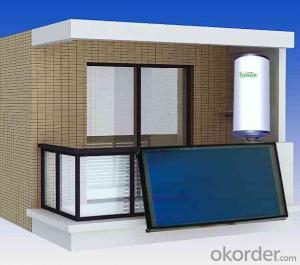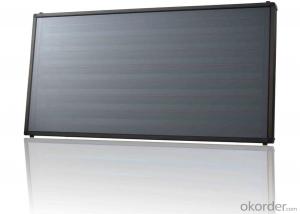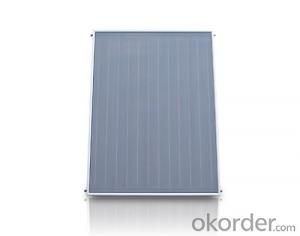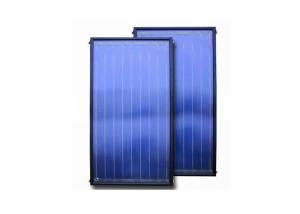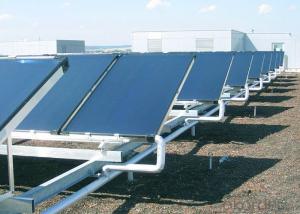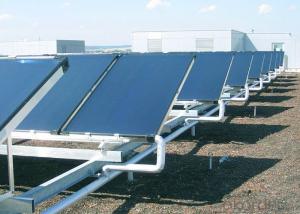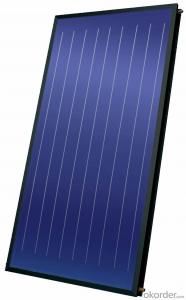Pearson Solar Collectors - Heat Pipe Vacuum Tubes with Certificate
- Loading Port:
- China main port
- Payment Terms:
- TT OR LC
- Min Order Qty:
- 5 set
- Supply Capability:
- 10000 set/month
OKorder Service Pledge
OKorder Financial Service
You Might Also Like
Specifications
manifold (inner) | red copper |
manifold (exterior) | aluminum alloy |
glass tube dimensions | 58mm * 1800mm |
daily efficiency | ≥55% |
heat preservation | 72 hours |
hail resistance | 25mm |
max pressure | 7 bar |
coating of vacuum tube | ALN/AIN-SS/CU |
heat pipe | anti-freezing > -35 degree |
certificate | Solar Keymark, EN12975,SRCC |
Serious Product
Models | L*W*H mm | Vacuum tube | Power output | Efficiency | Header mm | Frame | container loading 20FT/40HQ sets | Gross Weight kg |
SHC-8 | 1917*910*133 | 58*1800*8pcs | 939W | 0.668 | Φ35/1.0 | AL alloy | 185/445 | 27 |
SHC-10 | 1917*1130*133 | 58*1800*10pcs | 1189W | 159/385 | 33 | |||
SHC-12 | 1917*1350*133 | 58*1800*12pcs | 1440W | 149/358 | 40 | |||
SHC-15 | 1917*1680*133 | 58*1800*15pcs | 1815W | 120/290 | 49 | |||
SHC-18 | 1917*2010*133 | 58*1800*18pcs | 2191W | 100/242 | 59 | |||
SHC-20 | 1917*2230*133 | 58*1800*20pcs | 2442W | 87/210 | 66 | |||
SHC-22 | 1917*2450*133 | 58*1800*22pcs | 2692W | 83/202 | 72 | |||
SHC-24 | 1917*2670*133 | 58*1800*24pcs | 2943W | 77/188 | 79 |
Packaging & Delivery
Packaging Details: | Exporting Carton with big foaming protection |
Delivery Detail: | In 10-15 days |
Loading Quantity
Model | Tube | Tube Q.T.Y | Loading Q.T.Y/40HQ |
GSC15 | 58*1800mm | 15pcs | 315sets |
GSC18 | 58*1800mm | 18pcs | 265sets |
GSC20 | 58*1800mm | 20pcs | 248sets |
GSC22 | 58*1800mm | 22pcs | 225sets |
GSC25 | 58*1800mm | 25pcs | 200sets |
GSC30 | 58*1800mm | 30pcs | 168sets |
Principle of solar collector:
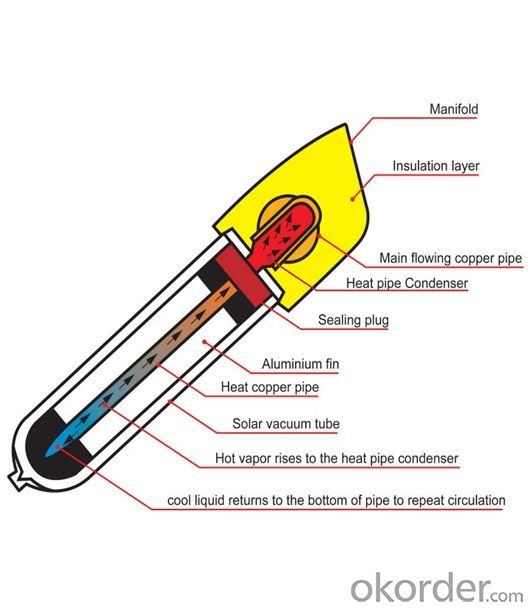
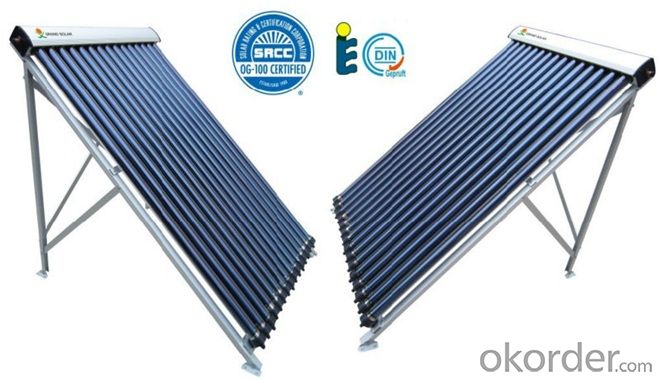
Solar collector details
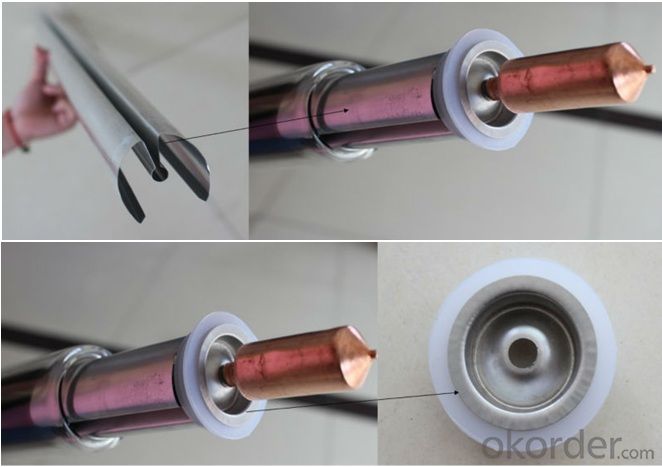
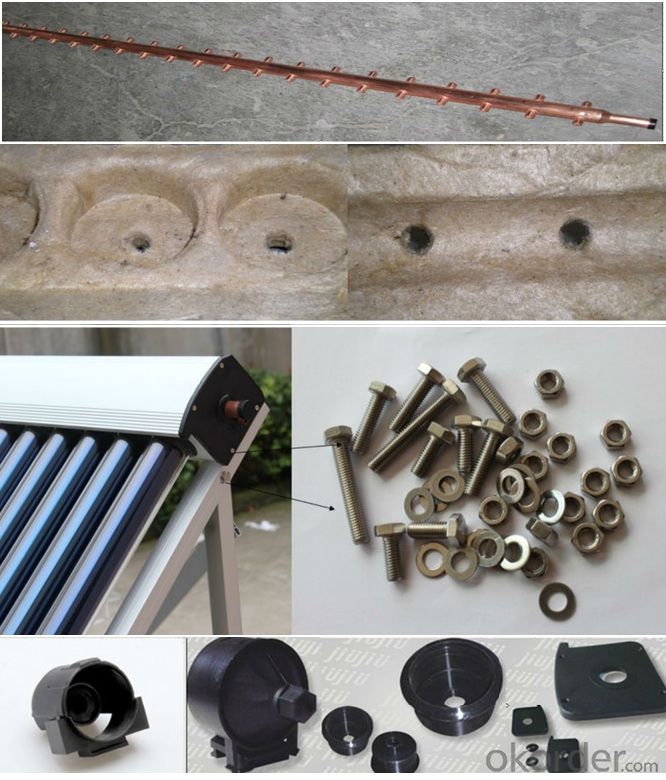
- Q: What is the effect of dust storms on solar collectors?
- Dust storms can have a negative effect on solar collectors by reducing their efficiency and potentially damaging their surfaces. The dust particles can block sunlight and decrease the amount of solar radiation reaching the collectors, thereby reducing their power output. Additionally, the accumulation of dust on the surface of the collectors can create a barrier that hinders the absorption of sunlight. Regular cleaning and maintenance are necessary to mitigate the impact of dust storms on solar collectors.
- Q: How do solar collectors perform in areas with air pollution?
- Solar collectors can be affected by air pollution in areas with high levels of pollutants. The presence of pollutants like smog, dust, and other particulate matter can reduce the efficiency of solar collectors by blocking sunlight and reducing the amount of energy they can capture. Regular cleaning and maintenance of the collectors can help mitigate the impact of air pollution on their performance. Additionally, advancements in technology and design are being made to develop more robust solar collectors that can better withstand and adapt to polluted environments.
- Q: Can solar collectors be used in livestock farming?
- Yes, solar collectors can be used in livestock farming. Solar collectors can provide renewable energy to power various aspects of livestock farming operations, such as heating water for animal drinking systems, ventilation, and even powering electric fences. This can help reduce reliance on traditional energy sources and lower operational costs, while also promoting sustainability in the agricultural sector.
- Q: Can solar collectors be used for drying sports equipment?
- Solar collectors have the ability to dry sports equipment by harnessing energy from the sun and converting it into heat. This heat can effectively dry various items, including jerseys, gloves, helmets, and shoes, which often require drying to prevent bacterial growth and eliminate unpleasant odors. To utilize solar collectors for drying, one simply needs to place the sports equipment in a sunny area, allowing the collectors to absorb the sun's energy and convert it into heat. This heat will then evaporate any moisture present, effectively drying the equipment. This process is not only environmentally friendly but also eliminates the need for additional energy sources. Moreover, opting for solar collectors to dry sports equipment can lead to electricity savings and reduced energy costs. Instead of relying on energy-consuming electric dryers or heaters, solar collectors make use of freely available solar energy. It is important to consider that the efficiency of drying sports equipment using solar collectors may vary depending on factors such as sunlight intensity, ambient temperature, and moisture levels. However, with proper placement and optimization, solar collectors can be a reliable and sustainable solution for drying sports equipment.
- Q: Can solar collectors be used for heating construction sites?
- Yes, solar collectors can be used for heating construction sites. Solar thermal systems can harness the sun's energy to provide heat for various purposes, including space heating and hot water supply. By utilizing solar collectors, construction sites can reduce their reliance on fossil fuel-based heating systems, decrease carbon emissions, and potentially save on energy costs.
- Q: Can solar collectors be used for heating synagogues?
- Yes, solar collectors can be used for heating synagogues. Solar thermal systems can efficiently capture sunlight and convert it into heat energy, which can then be used for space heating in synagogues. This renewable energy source not only reduces carbon emissions but also provides a sustainable solution for heating the building.
- Q: Can solar collectors be used to generate electricity in remote locations?
- Yes, solar collectors can be used to generate electricity in remote locations. Solar collectors, such as solar panels, can convert sunlight into electricity through the photovoltaic effect. This means that as long as there is sufficient sunlight, solar collectors can generate electricity regardless of the location, making them an ideal and sustainable solution for remote areas that lack access to traditional power grids.
- Q: Are solar collectors suitable for heating retail stores?
- Yes, solar collectors are suitable for heating retail stores. Solar collectors can effectively harness the power of sunlight to generate heat, which can then be utilized to warm up retail store spaces. This renewable energy source offers a sustainable and cost-effective heating solution while reducing reliance on traditional fossil fuels.
- Q: What is the effect of extreme temperatures on solar collectors?
- Extreme temperatures can have both positive and negative effects on solar collectors. On one hand, high temperatures can increase the efficiency of solar collectors by improving the conductivity of heat transfer fluids and increasing the output of electricity. On the other hand, extreme heat can also cause damage to the components of a solar collector, leading to reduced performance and potential system failures. Similarly, extremely low temperatures can reduce the efficiency of solar collectors by decreasing the conductivity of fluids and affecting the performance of photovoltaic cells. It is crucial for solar collectors to be designed and maintained to withstand and mitigate the potential negative effects of extreme temperatures.
- Q: What is the impact of air quality on the performance of solar collectors?
- The performance of solar collectors can be greatly affected by the quality of air. Accumulation of air pollutants like dust, smog, and particles on the surface of solar panels can significantly decrease their efficiency and overall power output. The presence of dust and dirt particles can form a layer of grime on the solar panels, obstructing sunlight from reaching the photovoltaic cells. This, in turn, lowers the amount of energy that can be converted into electricity, ultimately diminishing the performance of the solar collectors. Similarly, smog and other air pollutants have the ability to scatter and absorb sunlight, further reducing the amount of solar radiation that reaches the panels. Consequently, the efficiency of the solar collectors decreases as there is less energy available for conversion. Moreover, air pollution can also impact the temperature of the air surrounding the solar collectors. Higher pollution levels can lead to an increase in the ambient temperature, which can negatively affect the performance of the panels. Solar panels operate more effectively at lower temperatures, as excessive heat can cause a decline in their efficiency. In areas with high levels of air pollution, it is crucial to regularly clean and maintain solar panels in order to ensure optimal performance. By cleaning the panels and removing dust, dirt, and other pollutants, their efficiency can be improved, thereby maximizing the power output. Furthermore, it is important to note that the impact of air quality on solar collector performance varies depending on the specific type of solar technology employed. For example, concentrated solar power (CSP) systems, which rely on mirrors or lenses to concentrate sunlight, are highly susceptible to air pollution. The scattering and absorption of sunlight by air pollutants can significantly diminish the amount of concentrated solar radiation, thereby impacting the overall performance of CSP systems. In conclusion, the quality of air is a critical factor in the performance of solar collectors. High levels of air pollution can diminish the efficiency of solar panels by obstructing, scattering, or absorbing sunlight. Regular cleaning and maintenance are essential to mitigate the impact of air pollution and ensure optimal performance of solar collectors.
Send your message to us
Pearson Solar Collectors - Heat Pipe Vacuum Tubes with Certificate
- Loading Port:
- China main port
- Payment Terms:
- TT OR LC
- Min Order Qty:
- 5 set
- Supply Capability:
- 10000 set/month
OKorder Service Pledge
OKorder Financial Service
Similar products
Hot products
Hot Searches
Related keywords
